Contents
- Truly Delicious Japanese Dishes: Top 25 Ranking
- No.1 Sushi
- No.2 Ramen
- No.3 Tempura
- No.4 Takoyaki
- No.5 Okonomiyaki
- No.6 Yakiniku (Japanese BBQ)
- No.7 Shabu-Shabu
- No.8 Sashimi
- No.9 Miso Soup
- No.10 Udon
- No.11 Soba
- No.12 Wagyu Steak
- No.13 Gyoza
- No.14 Yakitori
- No.15 Tonkatsu
- No.16 Karaage (Japanese Fried Chicken)
- No.17 Bento
- No.18 Onigiri
- No.19 Yakisoba
- No.20 Sukiyaki
- No.21 Katsudon
- No.22 Japanese Curry Rice
- No.23 Matcha Sweets
- No.24 Oden
- No.25 Taiyaki
Explore 25 must-try Japanese dishes—from sushi and ramen to crispy tempura. Discover why visitors worldwide adore these timeless and flavorful favorites!
Truly Delicious Japanese Dishes: Top 25 Ranking
No.1 Sushi

Sushi is now one of the most beloved Japanese dishes, not only among visitors to Japan but also worldwide, with sushi restaurants opening everywhere. Travelers to Japan often enjoy unique experiences at conveyor-belt sushi restaurants or seek high-quality sushi at exclusive sushi bars. However, it’s not always easy to visit Japan. At Japan Food Recipe Studio, we provide simple sushi recipes and hand-rolled sushi ideas you can easily prepare at home.
No.2 Ramen

Ramen originated in China but has become widely loved across the globe as a traditional Japanese dish. Among international visitors, Tonkotsu ramen (pork bone broth ramen) is especially popular. Restaurants like Ichiran have expanded globally, and their locations in Japan often have long lines of eager customers. However, my personal favorite is Iekei ramen, a delicious style born in Yokohama, featuring a rich and addictive broth made from pork bones, soy sauce, and chicken oil (chiyu). I highly recommend trying it when visiting Japan. In the meantime, we have prepared a recipe for authentic Tonkotsu ramen, so please give it a try at home!
No.3 Tempura
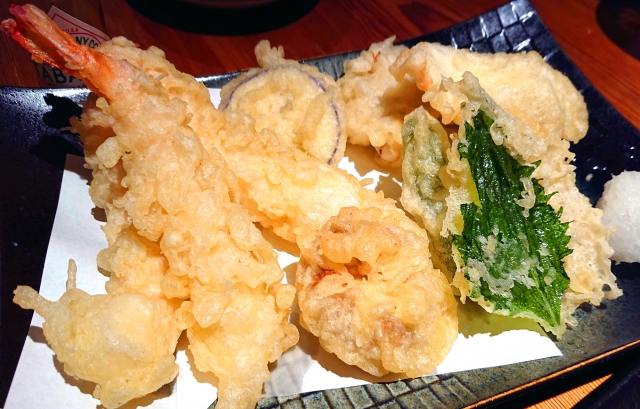
Tempura is said to have been introduced to Japan from Portugal in the 1500s and is now considered a traditional Japanese dish. It’s well-loved for its crispy texture on the outside and tender, juicy inside, making it a nuanced dish that can taste significantly different depending on who prepares it. Despite its depth, tempura is surprisingly easy to make at home, and it’s commonly served in Japanese households. Because the ingredients are simple and easily found in American supermarkets, it’s perfect for home cooking in the U.S. Give it a try!
No.4 Takoyaki
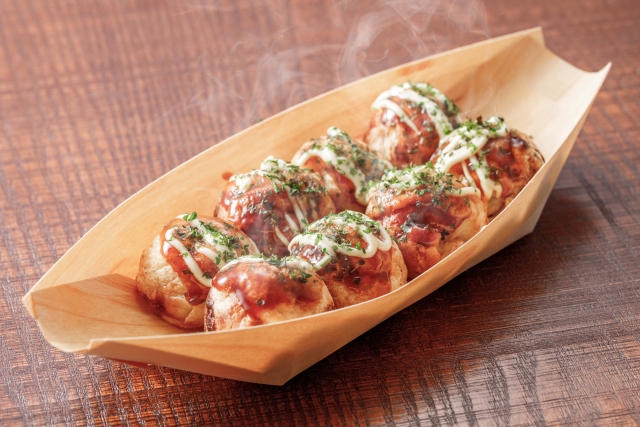
Takoyaki is a famous dish from Osaka, Japan. It’s no exaggeration to say that almost every visitor to Osaka tries Takoyaki and Okonomiyaki at least once during their stay. But be careful when eating! Freshly made Takoyaki are extremely hot inside, and many people end up burning their mouths (speaking from experience!).
In Japan, it’s also common for families and friends to have “Takoyaki Parties” at home, using special Takoyaki makers. Why not try hosting your own Takoyaki Party at home too? It’s delicious and a lot of fun!
No.5 Okonomiyaki
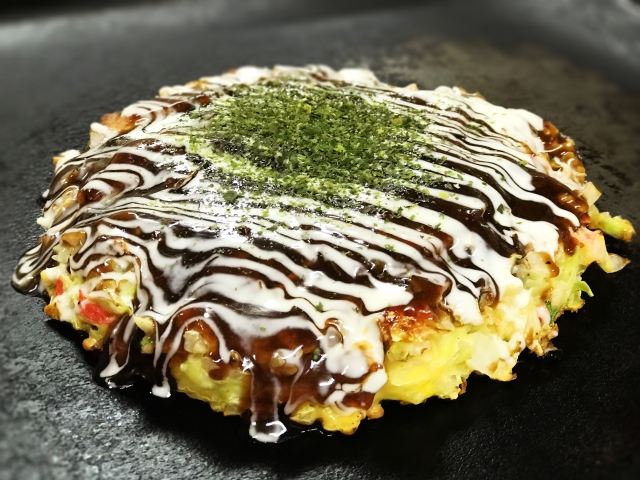
Okonomiyaki is another famous specialty from Osaka, just like Takoyaki. It’s also one of the Japanese dishes that visitors to Japan absolutely love. Americans, in particular, seem to enjoy the delicious sauce used in Okonomiyaki, and since each restaurant has its own unique sauce recipe, you can have fun exploring various tastes at different places.
One of the best things about Okonomiyaki is the cooking process itself—you mix and cook it yourself, flipping it right at your table. Like Takoyaki, Okonomiyaki is also easy and fun to prepare at home. We’ve included an easy recipe, so please check it out and try making your own delicious Okonomiyaki at home!
No.6 Yakiniku (Japanese BBQ)

Next up is Japanese Yakiniku, which is slightly different from Korean BBQ. Japanese-style Yakiniku primarily focuses on savoring the natural flavors of high-quality beef. To enhance the taste of the meat, there are several ways you can enjoy it—dipping it in soy sauce with wasabi, seasoning simply with salt, or pairing it with flavorful sauces. One popular item unique to Japanese Yakiniku is beef tongue (gyu-tan), something that might be new to many Americans but is beloved by locals.
With Japanese Yakiniku, the better the beef quality, the more you’ll appreciate its deliciousness. While authentic Wagyu can be difficult to find outside of Japan, there are stores in the U.S. where you can buy high-quality beef. Give it a try at home and enjoy the authentic taste of Japanese-style grilled meat!
No.7 Shabu-Shabu

Next up is Shabu-shabu, a popular hot pot dish originally from Japan. Hot pot meals are also beloved in China, known as “huo guo,” but Japanese Shabu-shabu focuses on savoring the natural flavors of fresh ingredients. There are many variations, such as classic kombu (seaweed-based) broth or rich soy milk-based broth, but the simple style of Shabu-shabu remains a favorite both at home and in restaurants.
It’s especially popular in Japanese households when time is limited because it’s quick and easy to prepare. Plus, Shabu-shabu allows you to enjoy a balanced and nutritious meal featuring proteins, vegetables, and tofu, making it a healthy dining option for everyone.
No.8 Sashimi

Sashimi is a Japanese delicacy consisting of fresh raw fish, skillfully sliced and served with soy sauce and wasabi. In the past, sushi and sashimi were often considered unappetizing by foreigners due to the raw fish. However, thanks to the global popularity of sushi, sashimi has now become widely loved as well.
While tuna and salmon are popular sashimi choices worldwide, white fish such as sea bream (tai), rockfish (kasago), and even squid offer deeper, subtle flavors worth exploring. When you visit Japan, be sure to try these white fish sashimi varieties for an authentic and delicious experience!
No.9 Miso Soup

Miso soup is a traditional Japanese soup, widely enjoyed overseas as well. It’s a staple at the Japanese breakfast table and has been a beloved part of Japanese cuisine since the Kamakura period (1200s). You could even joke that miso soup is embedded in the DNA of Japanese people!
Classic miso soup typically includes tofu and wakame seaweed. However, families often add other ingredients such as fried tofu (atsuage) or carrots to suit their tastes.
Additionally, miso contains free Linoleic acid, which is created during fermentation. This compound is believed to inhibit melanin production, which may help brighten and improve skin complexion.
No.10 Udon
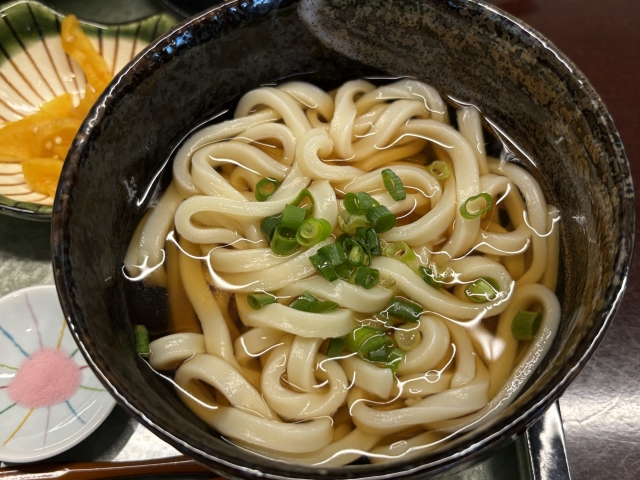
Udon has a history dating back over 1,000 years, and today udon restaurants can be found everywhere in Japan. Kagawa Prefecture is especially famous for its delicious udon, so if you’re looking to try authentic and tasty udon, it’s definitely worth a visit.
A key characteristic of good udon noodles is their unique texture called “koshi,” which is difficult to explain clearly in English. It’s not about being undercooked, but rather having a delightful chewiness and firmness that enhances the eating experience.
Fortunately, udon noodles are available in many grocery stores in the U.S. as well. If you make your own dashi broth, you can enjoy authentic and delicious udon at home!
No.11 Soba
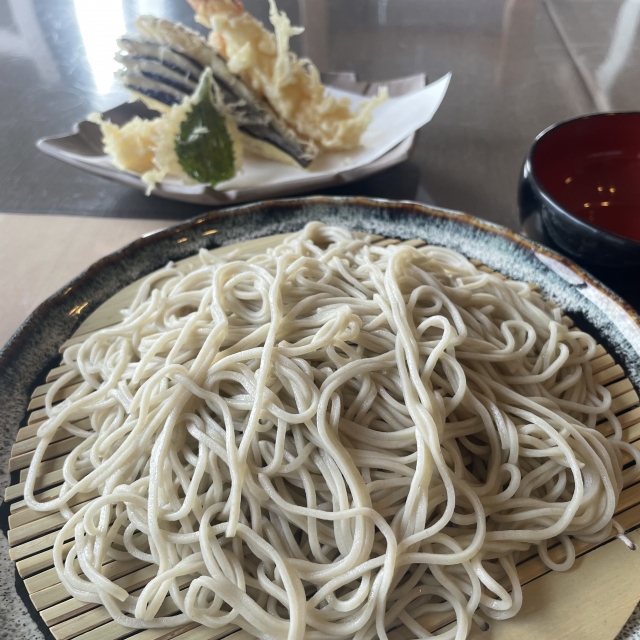
Soba has an even longer history than udon, believed to date back over 1,500 years, although it’s unclear whether it was eaten as noodles from the very beginning.
Unlike udon, soba noodles are traditionally enjoyed by slurping to fully appreciate their flavor. For many foreigners, slurping noodles can feel impolite or uncomfortable, but in Japan, making a sound when eating noodles is not just acceptable—it’s part of the culture. Especially when eating soba, the act of slurping enhances the aroma and taste of the noodles.
So, when you’re in Japan, feel free to slurp your soba noodles without hesitation and fully experience their unique flavor!
No.12 Wagyu Steak
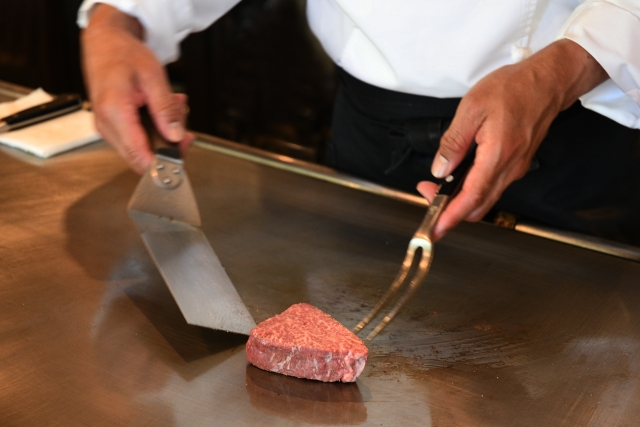
Wagyu steak refers to steak made from premium Japanese beef, famous worldwide for its extraordinary quality and marbling. In fact, the term “Wagyu” itself has become internationally recognized, symbolizing exceptional quality and flavor. Thanks to advances in freezing technology, delicious Wagyu beef is now widely available in restaurants and supermarkets across the United States.
Enjoying Wagyu is simple: it’s traditionally seasoned with just salt and pepper. While sauce is common, my personal recommendation is to savor it with soy sauce and wasabi, which perfectly complements the beef’s rich, buttery taste.
Dining out for Wagyu steak can be very expensive, but purchasing Wagyu at your local supermarket and cooking it at home is a great, budget-friendly way to experience its incredible flavor!
No.13 Gyoza
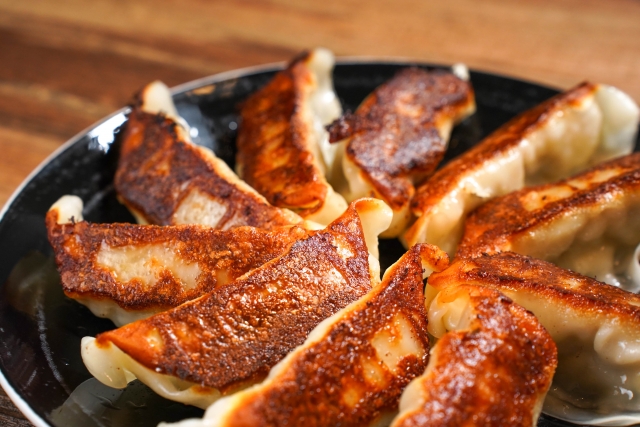
Next up is Gyoza (Japanese Dumplings). Gyoza originally came from China, where boiled dumplings (called Shui Jiao) are more common. However, in Japan, pan-fried gyoza is the most popular cooking style.
Today, gyoza has become extremely popular with visitors to Japan, though Japanese people usually enjoy gyoza at home rather than dining out.
Freshly pan-fried gyoza offers juicy pork filling and a delightful crunch from the cabbage inside. Wrapping the filling in dumpling wrappers can be a bit challenging at first, but it becomes fun if you do it together with family or friends.
You can buy gyoza wrappers at Japanese grocery stores, so why not try making gyoza at home and enjoy a tasty meal with your family!
No.14 Yakitori

Every country around the world has its own beloved chicken dishes, but Japan’s most iconic and historical chicken dish is Yakitori.
Yakitori is a staple dish at Japanese pubs called Izakaya, commonly enjoyed alongside drinks.
The history of Yakitori is quite old, dating back over 1,200 years, where it was originally prepared to pray for good harvests.
Yakitori is traditionally grilled slowly over charcoal, bringing out deep, smoky flavors, and typically seasoned with either salt or a savory-sweet sauce called tare. The charcoal’s infrared heat ensures the meat is evenly cooked, juicy, and flavorful. Additionally, popular Yakitori varieties include organ meats such as chicken hearts (hatsu) and gizzards (sunagimo).
Yakitori can easily be made at home using your oven or an outdoor BBQ grill, so why not give it a try and enjoy authentic Japanese grilled chicken with your family and friends?
No.15 Tonkatsu
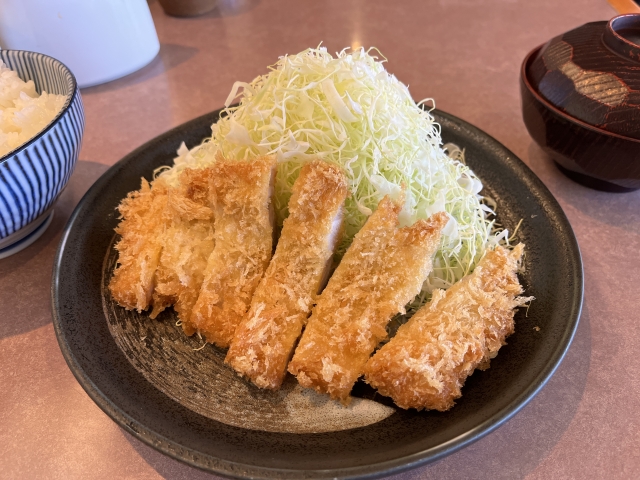
Tonkatsu is a popular Japanese dish consisting of pork cutlets coated with breadcrumbs and deep-fried until perfectly golden and crispy. Its history began in 1929 at a restaurant in Tokyo, quickly becoming beloved across the country for its crispy exterior and juicy, tender meat inside.
Originally inspired by the French dish côtelette, Tonkatsu was adapted by Japanese chefs and has since become one of Japan’s most famous dishes.
There are various ways to enjoy Tonkatsu—some prefer it simply seasoned with salt, while others drizzle a flavorful sauce on top. Traditionally, salt is sprinkled directly onto the pork, while sauce is poured over the crispy breadcrumb coating.
Enjoy discovering your favorite way to eat delicious Tonkatsu!
No.16 Karaage (Japanese Fried Chicken)
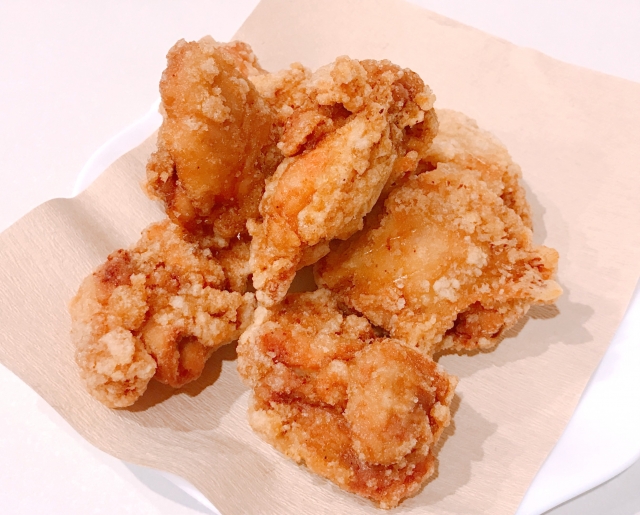
Karaage is one of Japan’s top-rated foods that people love finding in their lunch boxes. While often seen as a children’s favorite, it’s a staple beloved by people of all ages, so much so that every convenience store in Japan carries Karaage bento (boxed lunches with Karaage).
At first glance, Americans might think Karaage is just Japanese-style fried chicken, but there’s a key difference: the seasoning process. Karaage chicken is marinated primarily with soy sauce and garlic before being deep-fried, giving it a rich, savory flavor distinct from regular fried chicken.
Of course, each restaurant has its own unique method of marinating and frying Karaage. Why not try making your own delicious variation at home?
Marinated bite-sized chicken pieces, deep-fried for a crispy, savory snack or appetizer. Perfect with beer.
No.17 Bento

Next up is the Bento. Bento isn’t actually a specific dish—it’s essentially a portable lunch box filled with various foods to enjoy on the go.
Today, the Bento culture is so widespread that even the word “Bento” itself has become globally recognized. In Japan, the Bento tradition dates back to the 1500s. By the Edo period (1600s), Bentos became essential for people heading outdoors, going on picnics, or enjoying performances at the theater. This era also saw the development of “Makunouchi Bento,” a style specifically designed to be eaten during the intermissions (“幕間 Makunouchi”) of Kabuki theater performances.
Growing up in Japan, my mom used to lovingly prepare a Bento for me every day to bring to school. Each day, I’d eagerly open my lunch box thinking, “I wonder what’s inside today? Oh great, Karaage chicken!” Every Bento was unique, filled with a variety of dishes—and packed with love.
No.18 Onigiri
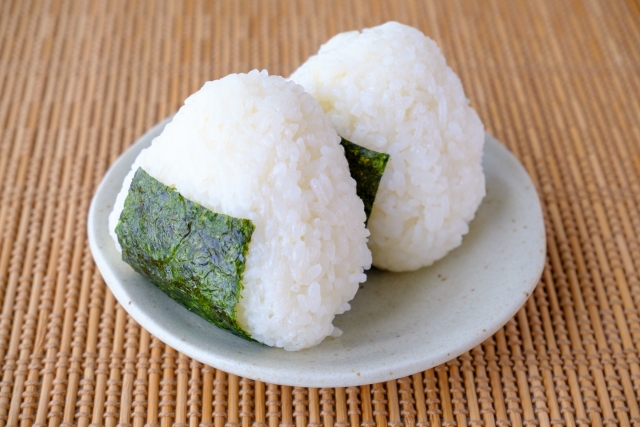
Onigiri is a traditional Japanese snack made by shaping rice into triangles or balls and wrapping them with a sheet of seaweed called “nori.” If you’ve ever visited Japan and stopped by a convenience store, chances are Onigiri was the first thing you grabbed!
There are numerous fillings to enjoy, including Tuna Mayo (tuna with mayonnaise), Mentaiko (spicy cod roe), Kombu (kelp), and Umeboshi (pickled plum). Among these, Tuna Mayo is especially popular with foreign visitors, and you’ll easily find it in every convenience store across Japan.
Onigiri is also one of the simplest dishes you can make at home, making it perfect for busy mornings or quick lunches. Give it a try!
No.19 Yakisoba
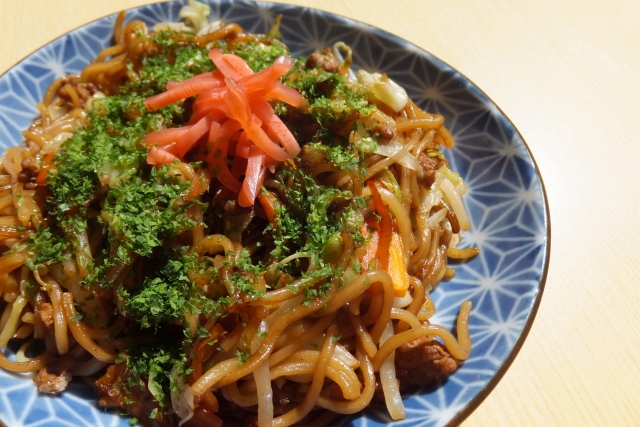
Yakisoba is a classic Japanese stir-fried noodle dish created right after World War II. At that time, wheat was expensive, so people stretched the noodles by adding inexpensive cabbage and seasoned it with a rich, savory sauce. By the 1970s, yakisoba became widely available in instant form, known as “Cup Yakisoba,” spreading throughout Japan.
Today, yakisoba is an iconic dish enjoyed at Japanese festivals and street stalls, and it’s hugely popular among international tourists visiting Japan. It’s extremely easy to make—once you have yakisoba noodles and the special sauce, you’re ready to cook and enjoy!
No.20 Sukiyaki

Sukiyaki is a traditional Japanese hot pot dish featuring thinly sliced beef, shirataki noodles, scallions, and vegetables cooked in a sweet, sugar-based sauce. One of the most surprising aspects of sukiyaki for foreigners is that it’s typically enjoyed by dipping the cooked ingredients into raw beaten eggs before eating. Many people from abroad may be shocked at the idea of eating raw eggs, but trust me—it’s worth giving it a try at least once!
The rich, creamy flavor of the fresh egg combined with the sweet and savory seasoned beef is incredibly delicious and highly addictive. Japanese eggs are carefully sanitized, making them safe for raw consumption. If you’re preparing sukiyaki in America, be sure to choose eggs carefully. Avoid older or unpasteurized eggs, and always ensure they’re labeled safe for raw or undercooked consumption.
No.21 Katsudon

Katsudon is a popular Japanese rice bowl dish made with crispy pork cutlets (tonkatsu) simmered in a savory-sweet sauce based on soy sauce and mirin, topped with softly scrambled eggs. The combination of flavorful pork, fluffy eggs, and steamed rice is incredibly satisfying and loved throughout Japan. In fact, a Japanese TV show once featured a foreign visitor who was so obsessed with katsudon that he traveled across the country just to find the best bowls!
Katsudon is often eaten the day before important events like exams or job interviews because of a Japanese wordplay—“katsu” in katsudon sounds similar to the word for “winning” (katsu). You’ll find plenty of specialized katsudon restaurants in Japan, so don’t miss trying it when you visit! It’s also very easy to prepare at home; check out our simple recipe linked below.
No.22 Japanese Curry Rice
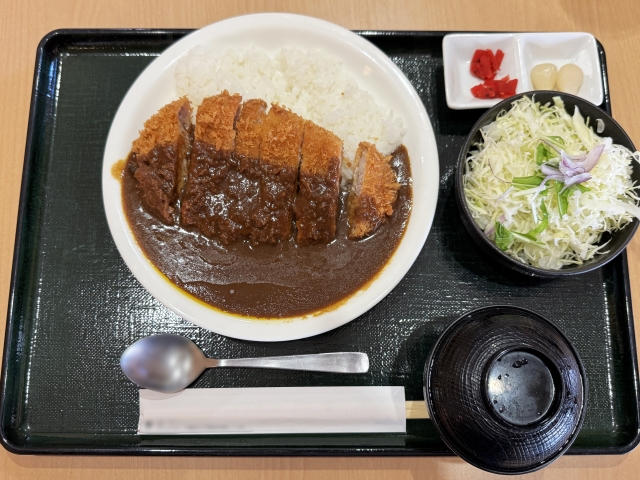
Curry rice was introduced to Japan via Britain and India, but over time, it has evolved into a uniquely Japanese dish. Although it might look unfamiliar at first glance—perhaps even making you wonder, “Can I really eat this?”—give it a try! With its perfectly balanced blend of dozens of spices, Japanese curry rice is incredibly delicious and addictive. It keeps you craving bite after bite!
In Japan, curry rice is the go-to meal on camping trips—it’s easy to make and always satisfying. You can even enhance its flavor by adding a pinch of instant coffee powder, which gives it a richer, deeper taste. Be sure to try making this flavorful dish at home!
No.23 Matcha Sweets
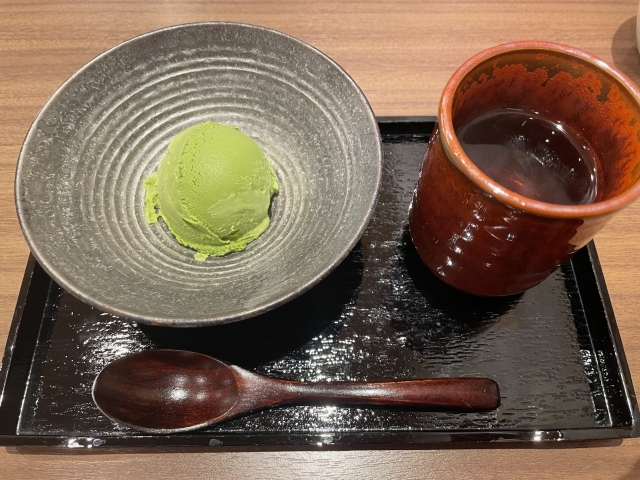
Next up, let’s talk about matcha sweets! Matcha is a type of tea introduced to Japan from China around 1200 years ago. While matcha and regular green tea come from the same plant, the key difference is that matcha leaves are shaded from sunlight for about two to three weeks before harvesting. This unique process gives matcha a deeper, slightly more bitter taste compared to regular green tea.
This pleasant bitterness pairs exceptionally well with sweetness, making matcha an ideal ingredient for desserts. Kyoto, one of Japan’s most popular destinations, is famous for its Uji Matcha, loved especially by international visitors. When exploring Kyoto, you’ll find a variety of delicious matcha-based sweets and desserts almost everywhere.
No.24 Oden
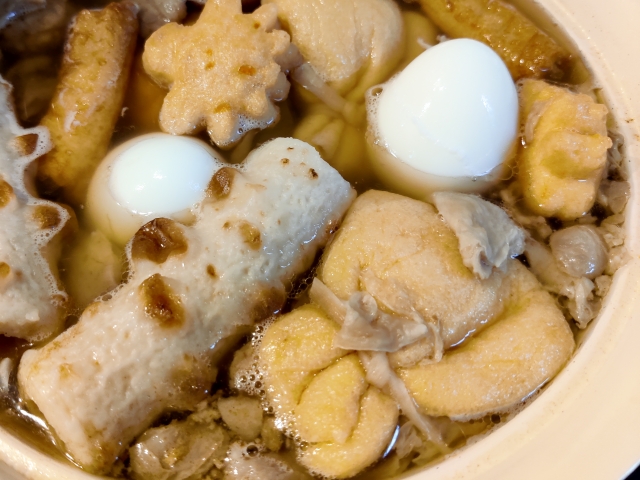
Oden originated around 600 years ago as “Tofu Dengaku,” grilled tofu with miso sauce. Over time, it evolved into today’s stew-like dish. About 350 years ago, the modern version of oden, seasoned with a soy sauce-based broth, emerged in Tokyo and gradually spread throughout Japan. Nowadays, oden is a classic street-food dish, especially popular at outdoor stalls known as “yatai”—mobile, cart-style eateries where you can enjoy delicious food and drinks outdoors.
Oden typically includes a variety of ingredients simmered gently in flavorful broth. Popular items are boiled eggs, daikon radish, and konjac (こんにゃく), but there are countless choices available. If you’re not sure what to order, start with these classics. By the way, the author’s personal favorite ingredient is gyu-suji (beef tendon)—highly recommended if you have a chance to try it!
No.25 Taiyaki

Next, let’s explore Taiyaki!
Taiyaki is a popular Japanese sweet treat that originated over 100 years ago, derived from another traditional pastry called “Imagawayaki.” At first glance, Taiyaki’s fish-shaped appearance might lead you to think it’s a seafood snack—but don’t worry! The fish shape is purely decorative. Taiyaki’s delicious fillings typically include sweet red bean paste (anko), custard cream, chocolate, or even matcha cream.
Thanks to its unique and fun fish-shaped design, Taiyaki quickly became popular throughout Japan. It’s also known as a treat that brings good luck, symbolizing prosperity and happiness. If you have a special wish or simply hope for good fortune, enjoying a tasty Taiyaki might just make your day a bit brighter!
